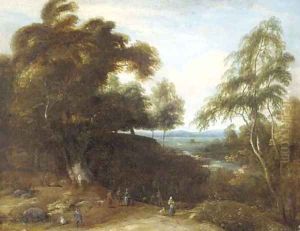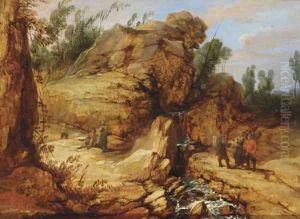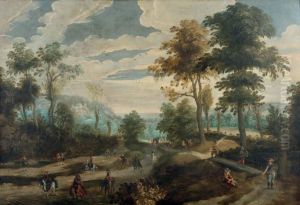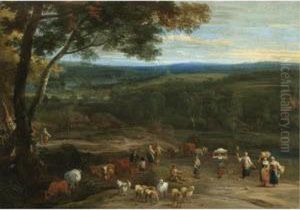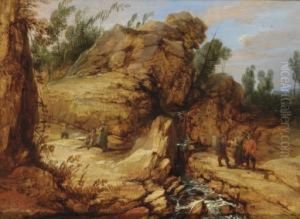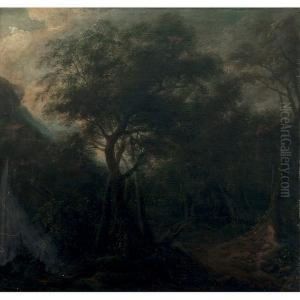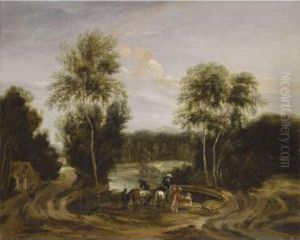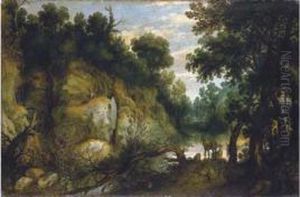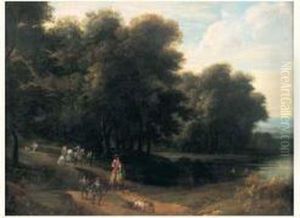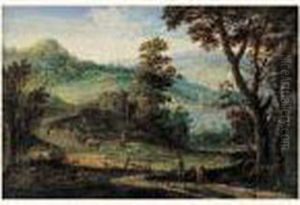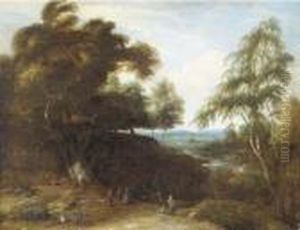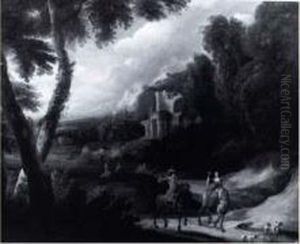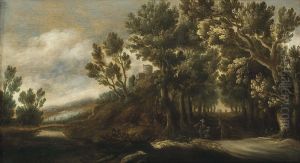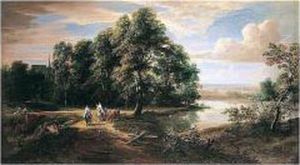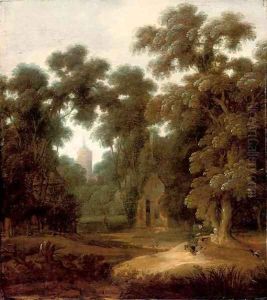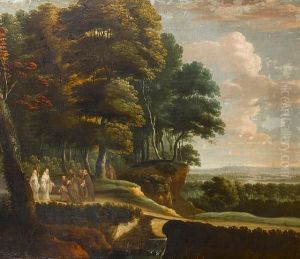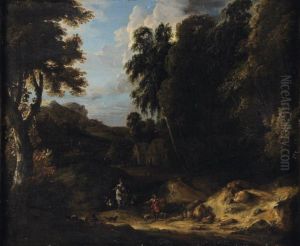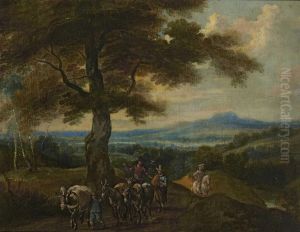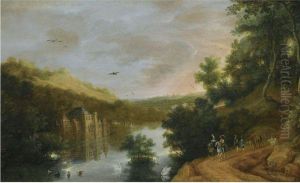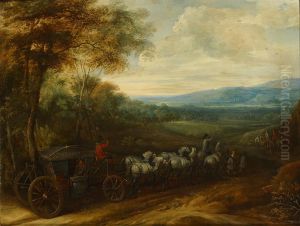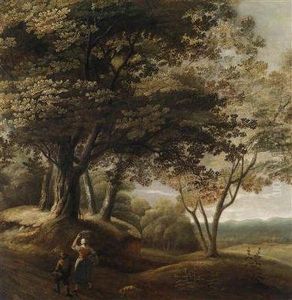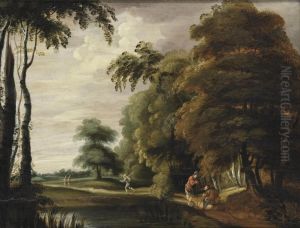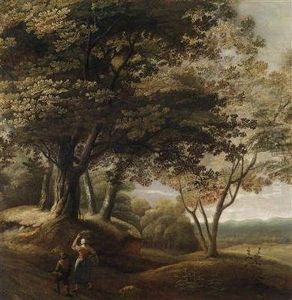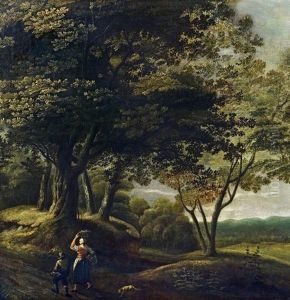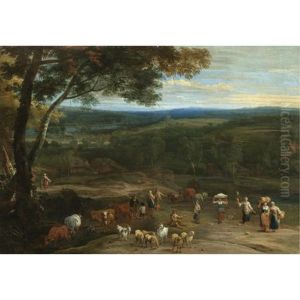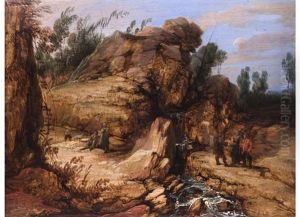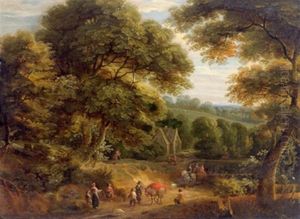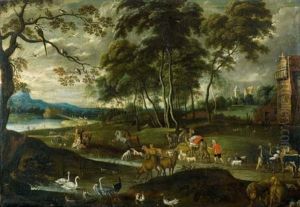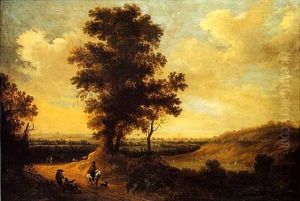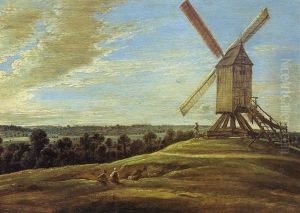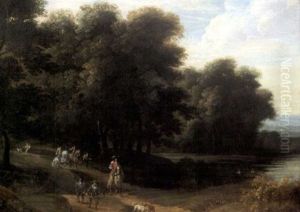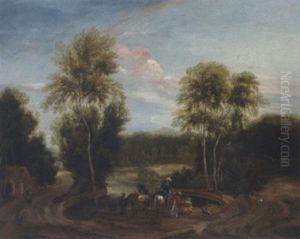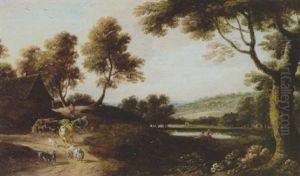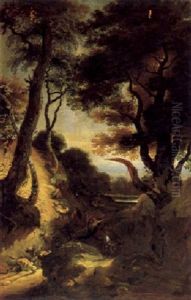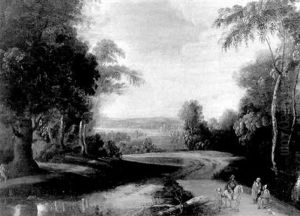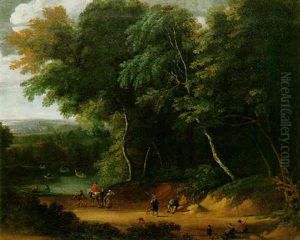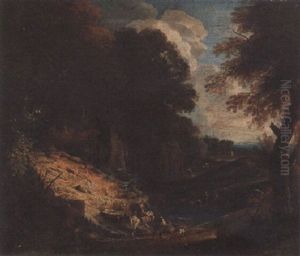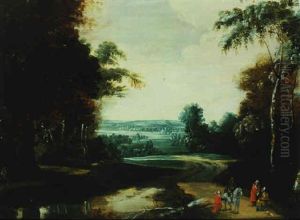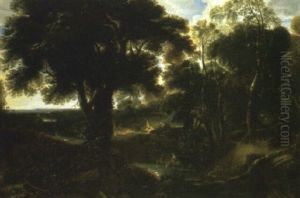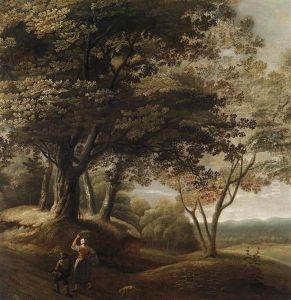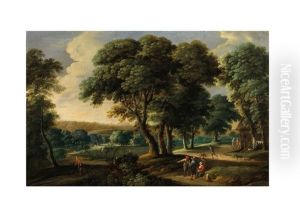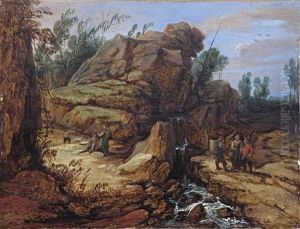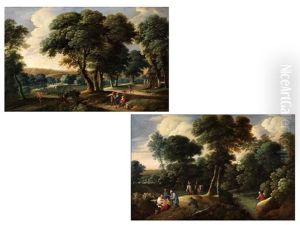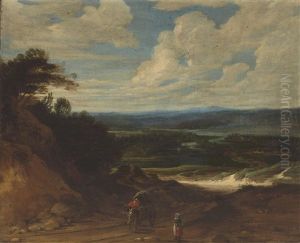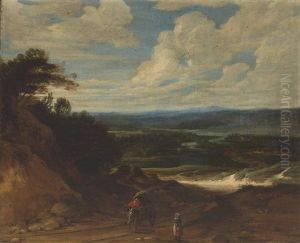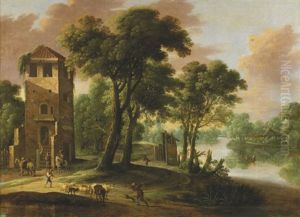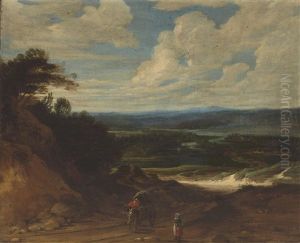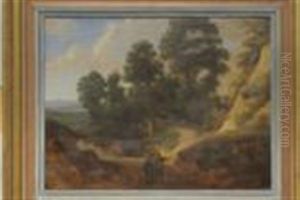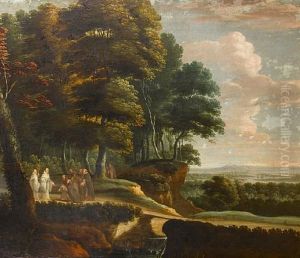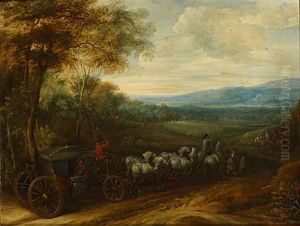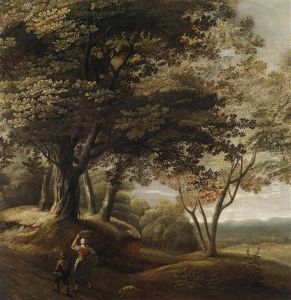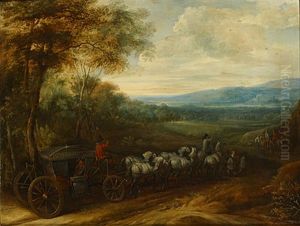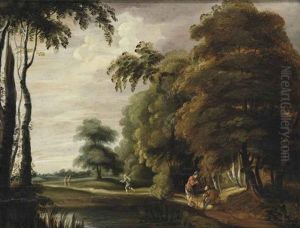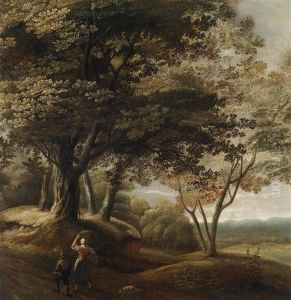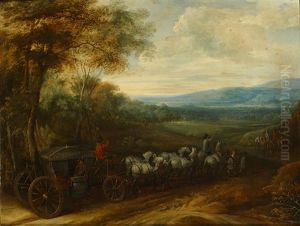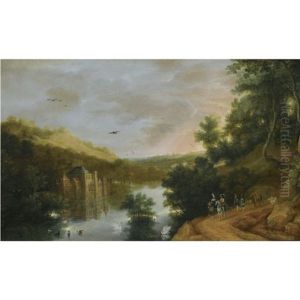Lucas Achtschellinck Paintings
Lucas Achtschellinck, also known as Lucas Achtschelling, was a notable Flemish landscape painter born in Brussels in 1626. His work is often associated with the Baroque period, and he is known for his pastoral landscapes that reflect the influence of his contemporaries and predecessors in the Flemish landscape tradition.
Achtschellinck initially trained under the landscape painter Lodewijk de Vadder, whose influence is evident in his early work. De Vadder was a master of the Sonian Forest near Brussels, and his style and subject matter had a lasting impact on Achtschellinck's own compositions. Lucas became a master in the Brussels Guild of St. Luke in 1651, which marked the beginning of his professional career as an independent artist.
Throughout his career, Achtschellinck's landscapes evolved, reflecting the influence of other Flemish artists such as Jacques d'Arthois and even the great Peter Paul Rubens. His works often depicted the wooded landscapes that were popular in Flemish art at the time, characterized by an attention to detail and a harmonious interplay between light and shadow. He meticulously rendered trees, foliage, and the play of light across various surfaces, contributing to a sense of depth and realism.
Achtschellinck also painted the backgrounds for religious scenes and figures executed by other artists, which was a common practice among landscape painters of his time. His works were well-received, and he achieved sufficient success to attract students of his own.
The artist's later work showed an increased interest in depicting different times of day and seasons, exploring the changing light and its effects on the landscape. Some of his works also include staffage, figures or animals added to the landscape to create a narrative or to enliven the scene.
Lucas Achtschellinck continued to paint until his death in 1699. While he may not be as widely recognized today as some of his contemporaries, his contribution to the Flemish landscape genre is significant, and his works can be found in various art collections and museums, offering a glimpse into the pastoral beauty that characterized the landscapes of 17th-century Flanders.
